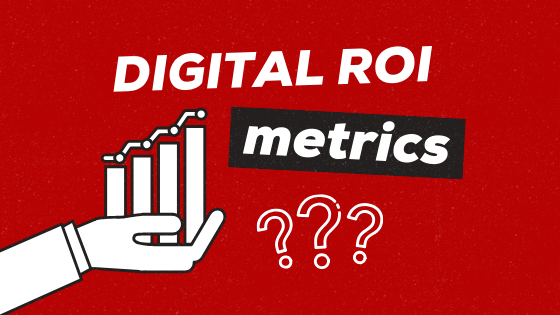Digital marketing campaigns refer to strategic initiatives implemented by businesses or organizations to promote their products, services, or brands using digital channels and technologies. These campaigns leverage various online platforms, tools, and tactics to reach and engage with the target audience.
Measuring the return on investment (ROI) of digital marketing campaigns is essential to evaluate their effectiveness and make data-driven decisions.
Here are steps to measure the ROI of your digital marketing campaigns:
1. Establish Clear Goals:
Start by defining specific and measurable goals for your digital marketing campaigns. These goals can include increasing website traffic, generating leads, driving online sales, or improving brand awareness. Clear goals provide a benchmark against which you can measure the success of your campaigns.
2. Assign Value to Conversions:
Determine the value of each desired action or conversion. For example, if your goal is to generate leads, assign a value to each lead based on its potential revenue contribution. This allows you to quantify the impact of conversions on your ROI calculation.
3. Track and Analyze Data:
Implement robust analytics tools, such as Google Analytics, to track and measure key metrics relevant to your goals. Track metrics such as website traffic, conversion rates, click-through rates, cost per acquisition, and average order value. Analyze this data regularly to gain insights into campaign performance and identify areas for improvement.
4. Calculate Costs:
Calculate the total cost of your digital marketing campaigns, including expenses such as advertising spend, agency fees, content creation, software subscriptions, and any other relevant costs. Ensure you account for both direct and indirect expenses to get an accurate cost figure.
5. Calculate Revenue and ROI:
Determine the revenue generated as a result of your digital marketing efforts. If you have an e-commerce website, this can be straightforward by attributing sales to specific campaigns. For lead generation or other non-direct revenue campaigns, you may need to establish attribution models to attribute revenue appropriately. Once you have the revenue figure, subtract the total campaign costs and divide it by the costs to calculate the ROI percentage.
ROI = ((Revenue – Campaign Costs) / Campaign Costs) x 100
6. Attribution Models:
Attribution models help allocate credit for conversions across multiple touchpoints or channels. Common models include last-click attribution, first-click attribution, linear attribution, and time decay attribution. Choose an attribution model that best reflects your customer journey and assign appropriate weights to each touchpoint.
7. Monitor and Optimize:
Continuously monitor the performance of your campaigns and make data-driven adjustments. Identify underperforming campaigns or channels and reallocate resources to more successful ones. A/B testing and experimentation can help optimize your campaigns for better results and improved ROI.
Measuring the return on investment (ROI) of digital marketing campaigns offers several benefits for businesses.
Here are some key advantages of measuring ROI:
1. Performance Evaluation:
ROI measurement allows businesses to assess the performance and effectiveness of their digital marketing campaigns accurately. It provides valuable insights into which campaigns are generating positive returns and which ones may need adjustments or reallocation of resources. By monitoring ROI, businesses can identify areas of improvement and optimize their marketing strategies to achieve better results.
2. Budget Allocation:
ROI measurement helps in making informed decisions about budget allocation. By understanding the ROI of different campaigns, businesses can allocate their marketing budgets more effectively. They can identify high-performing campaigns and channels that generate a positive return and allocate more resources to them. Conversely, campaigns with lower ROI can be adjusted or discontinued to prevent wasting valuable resources.
3. Data-Driven Decision Making:
ROI measurement provides businesses with concrete data to support decision-making. It enables marketers to move away from assumptions and gut feelings, basing their choices on measurable outcomes. By analyzing ROI data, businesses can make informed decisions about campaign adjustments, targeting strategies, budget shifts, or even choosing between different marketing channels or tactics.
4. Performance Benchmarking:
Measuring ROI allows businesses to establish benchmarks and compare the performance of different campaigns over time. By setting baseline ROI metrics, businesses can track progress and evaluate the impact of optimizations or changes. This helps in setting realistic goals, measuring success, and continuously improving marketing efforts.
5. Return on Ad Spend (ROAS):
ROI measurement helps calculate the return on ad spend (ROAS) for specific advertising campaigns. It provides insights into the revenue generated in relation to the amount spent on advertising. This information helps marketers evaluate the effectiveness of their ad campaigns and make data-driven decisions to optimize ad spending and maximize results.
Remember that measuring ROI is an ongoing process, and it’s crucial to track and analyze data consistently. By understanding the impact and effectiveness of your digital marketing campaigns, you can optimize your strategies, allocate resources wisely, and drive better ROI for your business.
If you want to learn more about Digital Marketing, visit our website – CrazyWebdev Technologies! We provide knowledgeable courses at affordable prices.
Reference Image – https://augurian.com/blog/10-digital-marketing-roi-metrics/


